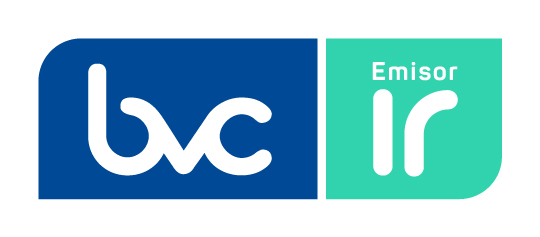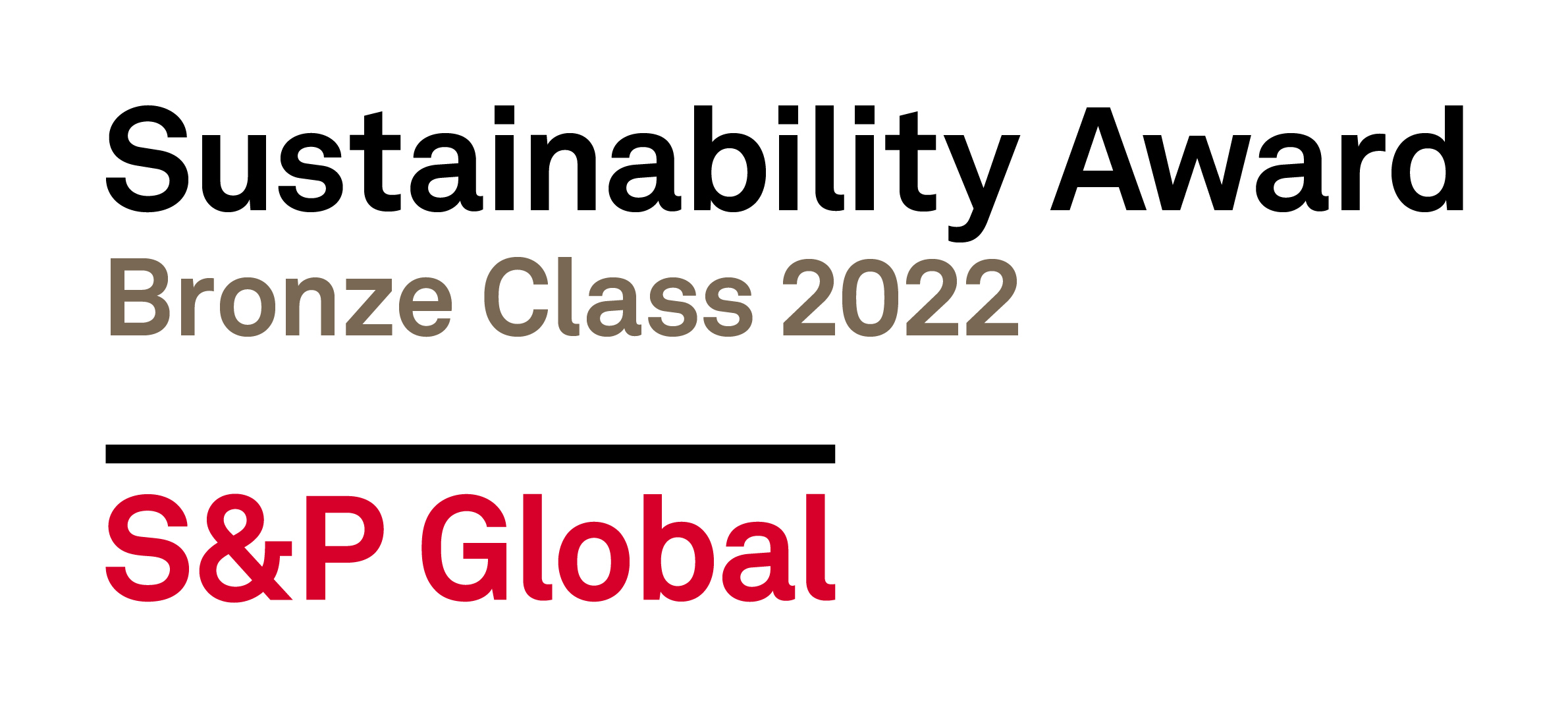We Take Care of the Planet
Climate Change
Aware of our role in climate-change management, we project an increasingly clean, balanced Energy Matrix.

GRI (103-1) At Celsia, we are Aware that the greatest current challenge facing humanity is climate change; for this reason, we recognize the challenge of operating in a changing environment and, for this, we project an increasingly clean, balanced Energy Matrix, with a high participation of non-conventional renewable energies. We develop innovative, low-carbon products and services, supporting the reduction of impacts associated with greenhouse gas (GHG) emissions and optimizing the availability of natural resources, which are a priority for our Organization.
We have worked on the externalities derived from climate change for the business, the physical and emerging risks present in the territories where we operate and evaluated their possible impact. This is how we formulate our Climate Strategy, which includes mitigation, compensation and adaptation actions.
- Offer a portfolio of low-carbon products and services.
- Improve the operational efficiency of the assets in order to manage and control noise and other atmospheric emissions.
- Measure the greenhouse gas (GHG) emissions of the operations and implement the measures necessary to reduce the intensity of emissions.
- Incorporate the variables of climate change and emissions management into the feasibility analysis of new investments and products.
- Implement projects for the ecological restoration of water basins, in compliance with environmental obligations and voluntary projects, such as ReverdeC.
- Formulate the international initiative of science-based goals, aimed at challenging emission-reduction commitments for the Organization.
- Reduce the intensity of GHG emissions associated with power generation by 25% by 2025 (base year: 2015) and declare ourselves carbon neutral with a base year of 2021.
- DJSI (2.5.1) We advanced in integrating our management of risks and opportunities related to climate change with the Task Force on Climate-related Financial Disclosures (TCFD) framework.
TCFD: Strategy – b. We constantly identify how climate change impacts us on different fronts. This, in order to have the information and the complete panorama to manage mitigation, adaptation and compensation initiatives, which lead us to fulfill our environmental goals.
Direct and Indirect GHG Emissions
SASB (IF-EU-110a.1)
In the countries where we operate, there are no regulations that limit Scope 1 emissions.
In the countries where we operate, there are no regulations to disclose the Scope 1 emissions.
GHG Emissions Avoided
Intensity of Emissions and Goal
Emission-Intensity Goal
DJSI (2.5.9) At Celsia, we want to actively contribute to the fight against climate change; for this reason, we have an Emissions-Intensity Goal at the Corporate level:
SASB (IF-EU-110a.3) In our emission-reduction goal, there has been no re-calculation of the information.
To achieve this goal, the Organization’s Growth Strategy is based primarily on the diversification of the Generation Matrix with renewable sources, divesting assets with high levels of GHG emissions and prioritizing efficient projects, products and services with a positive impact in terms of climate change. This transformation is transversal to all the territories where we operate and is aligned with international standards for the reduction of emissions throughout the Organization’s value chain.
In parallel, we identify the risks and factors that may affect the achievement of the goal to be prepared; among these are:
- Regulatory changes that affect the development of low-emission technologies.
- Phenomena of extreme climatic variability that affect the resources we use.
- Failure to obtain environmental licenses for wind and solar projects.
- Limited access to economic or financial resources for project development.
The Organization’s Strategy to reduce emissions is a voluntary issue; therefore, it does not respond to any regulation that limits our emissions with the technologies that we currently have. Likewise, the communication of the Organization’s Strategy to reduce emissions is a voluntary matter; therefore, it does not respond to any regulation to disclose our emissions.
Scope 3 Emissions
DJSI (2.5.11) GRI (305-3) Our three primary sources of Scope-3 emissions are:
- Activities related to fuel and energy (not included in Scope 1 or Scope 2).
- Waste generated in operations (composting, incineration)
- Business trips.
We have a reliable information-management system to collect and extract data, with which the performance of emissions in the categories presented below can be monitored.
Source 1
Activities Related to Fuel and Energy (Not Included in Scope 1 or Scope 2)
Relevance of the Source for Celsia
Fuel and Energy-Related Activities: GHG emissions from the value chain and the transportation and distribution of both electric energy imported from the network, as well as the extraction and production of fuels used in the Organization’s operations are included. The fuels included are diesel (ACPM), gasoline, Liquified Petroleum Gas (LPG), propane gas and fuel oil (Bunker).
Source 2
Waste Generated in Operations
Relevance of the Source for Celsia
Waste Management: This category is relevant for Celsia because it has a reliable information-management system to collect and extract data, with which it can monitor the performance of emissions in this category Waste management: GHG emissions derived from the management of waste generated at the Company’s various facilities in Colombia and Central America are included. In addition, the emissions derived from the transport of this waste to its place of disposal have also been included, in accordance with the types of disposal defined in the Organization (sanitary landfill or landfill, dump, incineration and security cell).
Metric Tons of CO2
equivalents emitted
Source 3
Business Trips
Relevance of the Source for Celsia
Corporate Trips: This category is relevant for Celsia because it has a reliable information-management system to collect and extract data, with which emission performance in this category can be monitored. Corporate Trips: GHG emissions derived from business trips made by the staff of the Administrative Headquarters of Medellín and Yumbo are incorporated. These trips are made by plant and have been classified into three (3) subcategories: Corporate plane trips (managed by a third party), Domestic air trips and International air trips.
Metric Tons of CO2
equivalents emitted
Methodology to Calculate Scope 3 Emissions for Sources 1, 2 and 3
Through a new technological tool implemented in Celsia, called the Sustainability Information System (SIS), the necessary information was collected to calculate the footprint.
Celsia’s Socio-environmental Management (SEM) Team was in charge of reviewing and verifying the information and monitoring the calculation of the carbon footprint for 2021.
The consistency of the reported data was reviewed and the calculation of the carbon footprint was developed, taking into account the guidelines of the ISO 14064-1 (SGS, 2012),
Green House Gas Protocol (World Business Council for Sustainable Development) and the guide for preparing national inventories of greenhouse gases (the Intergovernmental Panel on Climate Change (IPCC).
DJSI (2.5.12) TCFD (Metrics and objectives – a)
At Celsia, we are firmly advancing in the strategy of developing renewable energies; thus, we promote the projects with the highest carbon price to ensure the development of renewable initiatives within the Investment Portfolio. This is evident in the initiatives and projects underway, which contribute to energy efficiency and avoid CO2 emissions. During the process of analyzing these projects, we carry out the financial evaluation.
Among the benefits evaluated, we found: A higher carbon price, tax benefits (in Colombia: Law 1715 of 2014; in Panama: Law 45 of 2004), a shorter construction time for non-conventional-renewable energy projects and access to lower financing costs.
Climate-related scenarios
DJSI (2.5.6) GRI (2.5.7) TCFD: Risk Management – a, Strategy – c.) At Celsia, we use quantitative- and qualitative-scenario analysis to identify physical and transition risks in relation to the climate, fur business planning, based on different methodologies, such as science-supported goals with the 1.5ºC and 2ºC scenario and the Nationally Determined Contributions (NDCs) in the countries where we operate.
In this sense, we highlight that our strategy is aligned with the NDCs, prioritizing their growth through the development of non-conventional renewable energies:
Colombia’s national reduction objective is 51% of GHG emissions by 2030. The Ministry of Mines and Energy has defined four strategic lines for the sector:
- Electricity generation (non-conventional sources)
- Energy efficiency (increase in thermal efficiency)
- Fugitive emissions (oil)
Costa Rica committed to being carbon neutral by 2021, reducing GHG emissions by 30% and generating 100% renewable energy.
Panama intends to increase renewable energies to 30% in its Electrical Matrix.
Considering these lines of intervention, we have defined our Growth Strategy with low-carbon emissions, prioritizing the generation of wind, solar and hydroelectric energy.
Risks and Opportunities
We quantify climate-change risk. For this, we take into account the catastrophic CAT models made by Marsh (RMS RiskLInk and(or AIR Touchstone Computational Model), where the threats of nature are analyzed and the Probable Maximum Loss (PML) is established. This information is applied in contracting the coverage of the insurance program.
WE use the IPCC’s Representative Concentration Pathway (RCP) 2.6 Scenario. This proposes four different scenarios assuming different levels of effort to reduce GHG emissions at the global level, each with different climate-change impacts, where 2. Refers to a decline scenario that assumes a substantial reduction in GHG emissions over time.
We quantify the Company’s risks and use a stochastic model, known as Monte Carlo Modeling, to calculate the Value at Risk (VaR).
During 2021, we evaluated the impact of physical risks on the Organization’s assets, in order to determine the exposure and the actions necessary to control it, consistent with the expected useful life of the assets and activities. For transition risks, the evaluation was made based on possible scenarios of legislation, technological development and market conditions.
DJSI (2.5.6, 2.5.7) TCFD (Risk Management – a.) We carried out an assessment of the physical and transition risks and impacts of climate change for most assets, according to their specific context. With the climate risk-identification and assessment exercise, we also publicly disclosed the analysis of the scenarios used, the assessment approach and the respective scope (our own operations).
Based on these exercises, we designed the respective action plans to mitigate, transfer or control them.
Regulatory Risk
In Colombia, there is currently a tax on natural gas as an instrument to encourage actions that prevent the emission of greenhouse gases (GHG). This tax does not yet apply to natural-gas consumption for thermal generation; therefore, it does not apply to our Company. However, if this tax were to be collecting in the coming years, the economic impact would be approximately COP 2,220,000,000, taking as a reference the tax rate of COP 18,296/Ton CO2 and taking an average of 121,356 Ton CO2. In accordance with the Decarbonization Strategy and with a view to the Neutral-Carbon Plan, we propose to comply, even before it will be mandatory within the Climate Action Law project, since the regulations propose convenient, achievable milestones,
DJSI (2.5.4, 2.5.6) GRI (201-2) TCFD (Strategy – a.)
Physical Risk
The primary physical Risks that Celsia faces are dry seasons, sedimentation of reservoirs, erosion of the earth’s layer, and exposure to stock-market prices.
These Risks are managed through the application of strategies to evaluate water sources, reforestation activities, which – through the ReverdeC Program – have planted and cared for 8,800,000 trees, the efficient use of water, the water and carbon footprint, and the control of reservoir sedimentation.
Additionally, the development and construction of 1,273 MW of renewable generation in the next four years and the integration into the portfolio of low-emission products and services allow mitigating these effects.
The implementation of forecasting methodologies based on the efficient frontier and the Value at Risk (VaR) are essential to manage the volatility of stock prices and establish optimal engagement levels.
Financial Risks and Opportunities
At Celsia, we rely on financial models and the scenario-planning methodology to define a short-, medium- and long-term strategy, with the aim of maximizing our results for our Stakeholders, allowing risk to be limited within objective values.
The models calculate the primary indicators, such as EBITDA, Return on Invested Capital (ROIC), Return on Capital Employed (ROCE), the Internal Rate of Return (IRR) and Free Cash Flow within different scenarios, which allow us to identify possible changes in commercial policy, volatility in stock prices, the impact of hydrological cycles and extreme climatic conditions, such as the El Niño and/or La Niña phenomena. Likewise, we use a Monte Carlo stochastic model to calculate probabilities on random variables and the VaR analysis of risks, such as the availability of water resources, fuel supply, spot price, and demand, which allow us to evaluate the profitability of the portfolio and the possible impacts on the results.
Among the primary opportunities of climate change are the financing conditions of renewable projects, the use of tax benefits, such as Law 1715/14 and Law 1819/16 in Colombia and Law 45/2004 in Panama. Additionally, we consider the sale of Carbon Credits, thanks to the CO2 emissions avoided with the construction of 1,153 MW of renewable generation in the next four years. Added to this is the efficiency of demand, based on the change in consumer behavior and energy efficiency.
During 2021, Celsia carried out the third emission of Green Bonds worth COP 140 billion, awarded to the International Finance Corporation; with this, a total emission of COP 280 billion is reached, taking into account the first emission made in 2018. At the end of 2021, a Sustainable Credit Agreement was signed with Bancolombia, linked to compliance with environmental, social and Corporate-Governance indicators.
In order to mitigate the effects of climate change and take advantage of the opportunities that may be generated from it, we consider these relevant issues to work on in the short, medium and long term:
- Tax benefits
- Carbon markets
- Sustainable loans
- Tradable-quota markets
- Carbon tax
- Carbon neutrality
- Net zero
- Generation from Hydrogen and other alternative sources
- Renewable-Energy Certificates of Origin
DJSI (2.5.5)
The most-significant opportunity related to climate change is the generation of EBITDA, which improves the profitability indicators and the capital employed, thanks to the investments in renewable projects proposed for Colombia and Central America in the next four years. The estimated annual average CapEx is USD 300 million/year. In this period, total investments in CapEx will be USD 1.104 billion, of which USD 517 million is for wind projects and USD 587 million, for photovoltaic projects. (Reference Representative Market Rate (TRM, in Spanish): COP 3,700/1 USD).
TCFD Strategy – b.) Climate change has different impacts on financial planning in different areas:
Access to Capital
The development of renewable projects allows access to sources of capital and lower financing costs. It allows the creation of strategic alliances to have access to resources, extensive knowledge and a greater relationship to continue being pioneers in renewable energies. Investors have a lower perception of risk in our Company, which allows access to capital through investment activities that contribute to the creation of value and the growth of our operations.
Acquisitions or Sales
Financial planning allows us to continue transforming the Company and investing in modern, sustainable and reliable infrastructure. The primary objective is to continue contributing to improving capital returns through continuity plans and expansion projects to accelerate growth and improve profitability indicators and capital employed, thanks to investments in renewable projects.
Capital Expenditures and Capital Allocation
Through financial planning, different initiatives and projects that are eligible for investment are identified and it allows the financial and economic profitability of the Business Plan to be analyzed.
Operating Costs and Income
Thanks to the Company’s short- and long-term planning and control, it has been possible to maximize the results for our Stakeholders. EBITDA generation improves profitability indicators and capital employed, thanks to investments in renewable projects.
We implemented a monitoring, reporting and verification process for the Dos Mares Hydroelectric Complex in Panama to obtain more than 1.6 million Emission-Reduction Certificates, which allows us to consolidate our participation in the carbon market.
We eliminated the generation of energy with fossil fuel (coal) in the Colón Thermal Complex Power plant, which has a positive impact on the reduction of the Organization’s direct emissions.
The Celsia Prudencia Solar Farm in Panama and El Carmelo and La Paila, in Colombia, were commissioned.
We registered 15 solar farms to obtain Carbon Bonds.
New Challenges
These are our short-, medium- and long-term challenges:
- DJSI (2.5.1) Fully integrate the Task Force on Climate-related Financial Disclosures (TCFD) framework into our management of climate-change risks and opportunities by 2023.
- Define the emissions goal under the science-based goals methodology.
- Construct and commission the Acacia II Wind Park and the Escobal Solar Farm.
- Obtain Carbon Neutrality
- Certify the ReverdeC Program under a carbon standard.
- Achieve the goal established of planting 10,000,000 trees by 2025.
- DJSI (2.5.8) Apply the Adaptation Plan to the physical climatic risks identified in a period of less than five years.
- Construc and commission the Camelia, Camilia I and II Wind Farms and the Celsia Chicamocha Solar Farm and the Celsia Valledupar Solar Farm, in Colombia, each with an installed capacity of 100 MW.
- Reduce 25% of the intensity of emissions (Ton CO2eq/GWh) by 2025, with a base year of 2015, in all our operations.
- Achieve a Generation Matrix with at least 25% non-conventional renewable-energy sources.
Glossary
Carbon Bonds: An international decontamination mechanism to reduce polluting emissions into the environment. GHG-emission reductions are measured in tons of CO2 equivalent ((Ton CO2eq), and are translated into Certificates of Reduced Emissions (CER). One CER is equivalent to one ton of CO2 that is not emitted into the atmosphere, and can be sold in the carbon market to industrialized countries. An example of the types of projects that can apply for a Certification is: Generation of renewable energy, improvement of the energy efficiency of processes, reforestation, cleaning of lakes and rivers, etc. (the Kyoto Protocol).
Direct Emissions: These are direct greenhouse-gas (GHG) emissions that occur from sources that are owned or controlled by the Organization in the following types of activities:
- electricity generation
- heat or steam
- physical or chemical processes
- transportation of materials, products, waste and employees
- fugitive emissions (ISO, 2006)
Indirect Emissions: These cover emissions from the generation of electricity acquired and consumed by the Company, which is purchased or brought within the selected spatial limit (ISO, 2006).
Nationally Determined Contributions (NDCs): Nationally Determined Contributions are projected reductions in greenhouse gas (GHG) emissions, under the United Nations Framework Convention on Climate Change.
Science-Based Targets (or Goals) (SBTs): Emission-reduction goals aligned with climate science. SBTs are long-term emission-reduction goals that are aligned with the level of decarbonization necessary to meet each goal.
Task Force on Climate-related Financial Disclosures (TCFD): The framework that guides companies to disclose information related to the risks and opportunities of climate change and its financial impact.







